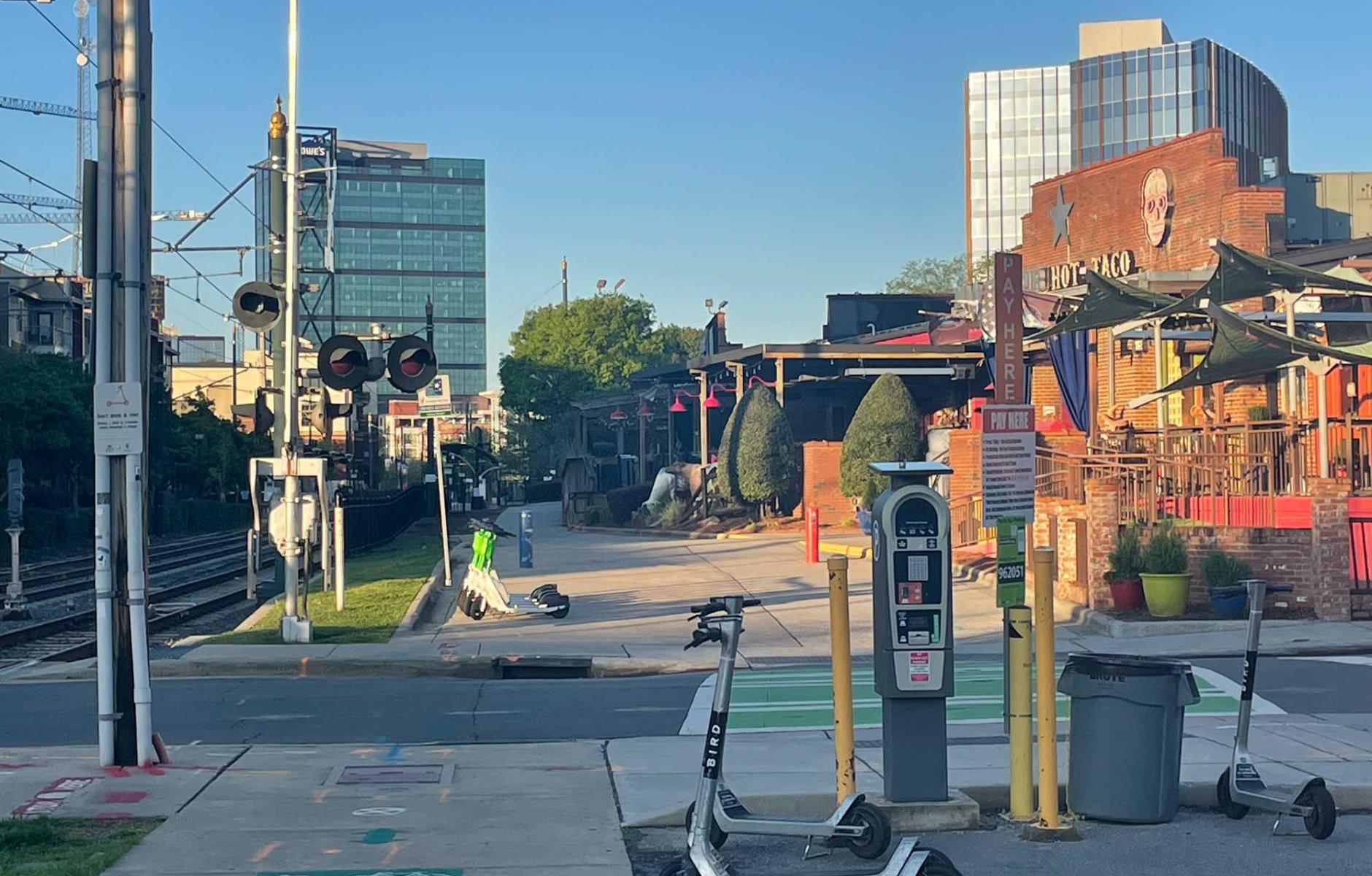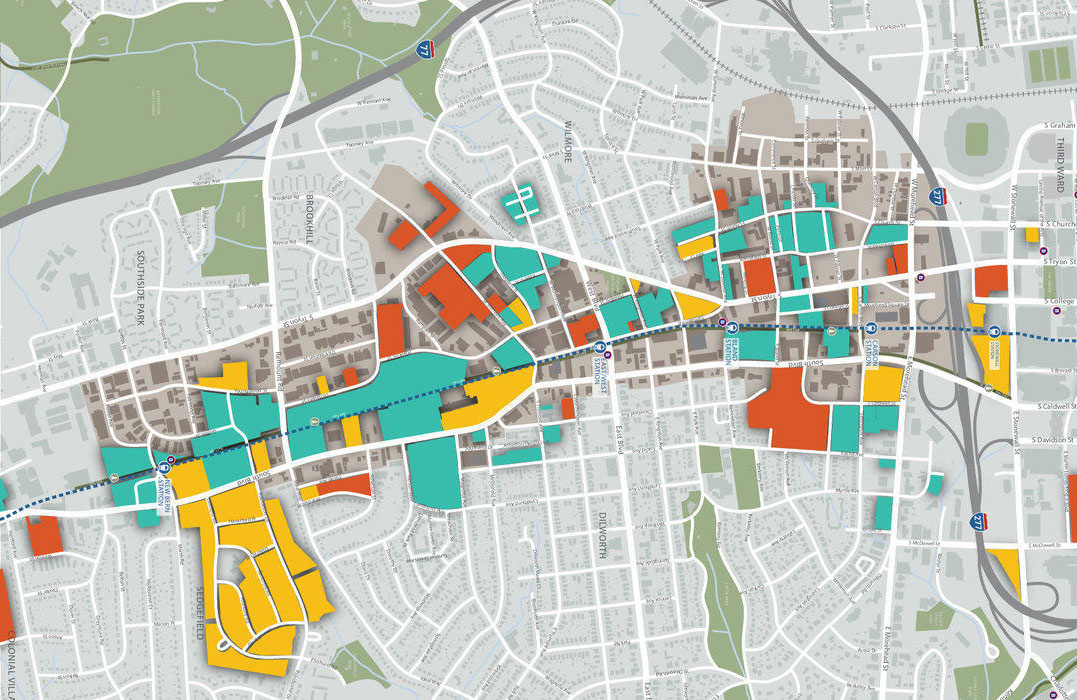
A funky mix of transit-oriented development
When you go to Charlotte, North Carolina, you are likely to wind up in the South End, a funky mix of new buildings and converted warehouse and industrial sites a mile or two south of Uptown, the city’s central business district. The area is noted for its ongoing building boom, but also forms a great case study of urbanism. It’s the trendiest place in Charlotte for hip, young professionals.
Many readers, who will be attending CNU 31 in Charlotte May 31 to June 3, will soon spend time in this district—which may have the best street life in the city. There are eight craft breweries and more than 200 restaurants and shops in the narrow corridor about two miles long, covering less than one square mile. The district is served by four stations along the Lynx Blue Line light rail system, which opened in 2007.
At the turn of the millennium, the South End was largely a depopulated warehouse area. As of 2019, it had 11,000 residents. By 2024, it is expected to have about 17,000. Twenty-somethings who work in nearby office buildings make up a large chunk of the population.
“Fortune 100 giants including Allstate Corp., Ernst & Young and Lowe’s Cos. are leasing big chunks of space, pushing rents at or above those of Charlotte’s downtown. On most nights and weekends, the neighborhood bubbles with energy as one of the city’s most popular spots for drinking, dining, running, biking, dog walking and many other activities.” According to Business North Carolina.

Light rail is the spine of the South End, and most of the new development is built very close to the line. You might say that light rail forms a primary thoroughfare through the district. The Lynx Blue Line was built through the middle of underutilized blocks on the South End, and a multiuse path about 10 feet wide was constructed on both sides of the tracks. This path, which goes on for miles, is a generator of urban frontages. New development fronts this path, creating another layer of urbanism between the old street network. The path is very active with pedestrians, joggers, and cyclists from early morning to late in the evening.
Architect Terry Shook, a CNUer based in Charlotte, jokes that the South End is an overnight success 25 years in the making. Shook's partner, Kevin Kelley, and developer Tony Pressley in 1996 gave the South End its name, but it wasn’t until 2002 that the first large new residential project opened. Even then, it took a while for development to boom in the area. After the Blue Line opened, the nation entered the Great housing bust. When development resumed, the South End was ground zero in Charlotte.

“More than anything, South End has made Charlotte a much more inviting place to live for young, talented professionals who have options to work in Atlanta, New York or other markets, boosters say,” notes Business North Carolina. “In the early days of the revitalized South End, design firms and ad agencies formed the core of the business community. Today, the district rivals downtown as a preferred site for a corporate headquarters or division office.”
CNU 31 attendees will tour the South End via e-bike (along with other neighborhoods of the city). There will be five bike tours led by experts, a mode of tour that has not be done this extensively during previous Congresses.

Note: One of the best times of the Congress happens just prior to the Congress, on the City Building Express, a bus tour of CNUers that travels for several days, arriving at the host city in time for the big event. This year, the City Building Express will start in DC, going through Virginia and North Carolina, stopping at many notable urban locations to look and learn, before arriving in Charlotte. The dates are May 28-30.





